Seminar on the future of Vietnam’s textile and footwear after TPP opens
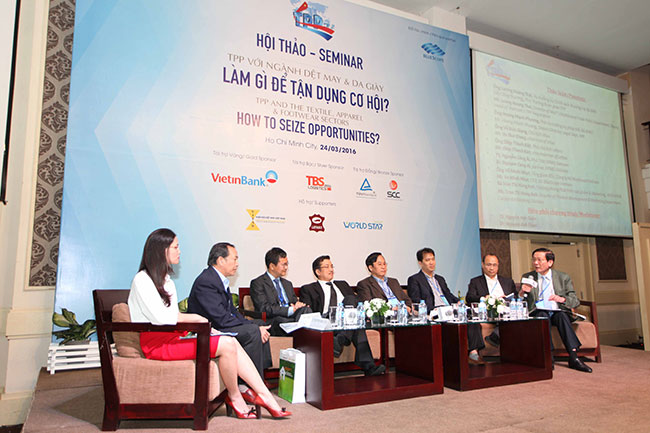
The seminar, officially named “TPP and the Textile, Apparel, and Footwear Sectors: How to Seize Opportunities?”, is jointly organised by VIR and the Vietnam Association of Foreign-Invested Enterprises (Vafie). It has also received support from the Vietnam Textile and Apparel Association (Vitas) and the Vietnam Leather, Footwear, and Handbag Association (Lefaso).
The textile, apparel, and footwear industries, all of which are rated amongst Vietnam’s major export areas with a total annual turnover of $27 billion in 2015, are expected to benefit the most from the lowered tariffs after the Trans-Pacific Partnership (TPP) comes into effect. Fellow TPP members, such as the US and Japan, are also Vietnam’s largest export partners in textile and footwear, bringing great opportunities to Vietnamese exporters in these sectors..
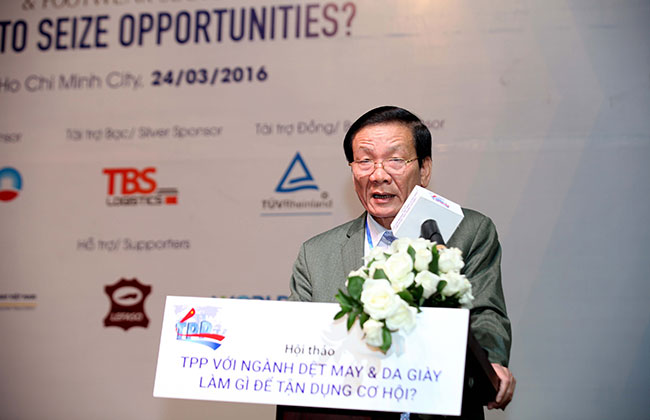
During his opening speech, Dr Nguyen Anh Tuan, deputy chairman of Vafie and former editor-in-chief of VIR, noted that Vietnam’s admission to the TPP was expected to bring great opportunities to the domestic textile, apparel, and footwear sectors. Sectorial players will be well-posited to capitalise on market expansion, export growth, and a deeper engagement in the global supply chain. However, numerous challenges darken the horizon.
“The seminar focuses on appraising the implications of the TPP on the textile, apparel and footwear industries and analysing the bottlenecks that may affect the performance of businesses in the sector. Notable issues include engagement in the global value chain, buyers’ trends, the domestic support industry, among many others. We will also discuss measures to tackle these bottlenecks and take advantage of the opportunities that the TPP offers to the textile, apparel, and footwear sectors,” he said.
According to statistics released by Vitas, 75 per cent of Vietnamese firms in the textile, apparel, and footwear sectors only offer simple cut-make-trim services, while only 2 or 3 per cent can participate in high-value-added activities, such as original design marketing. Moreover, 70 per cent of materials are imported, with more than half coming from non-TPP countries, such as China and Korea.
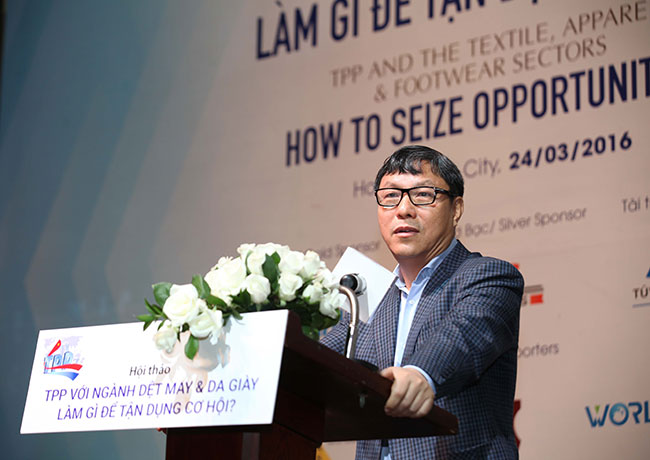
As a result, Deputy Minister of Planning and Investment Dang Huy Dong emphasised that Vietnamese firms, especially supporting industries, must prepare thoroughly for the TPP, especially in terms of materials, due to the “yarn forward” rule of the trade deal.
Concerns about environmental pollution are also mounting due to the high levels of sewage released by dyeing and weaving factories—of which we might see a lot more in the coming time. The Ministry of Planning and Investment is thus collaborating with other relevant Ministries to find a solution to this problem.
Likewise, Dr Nguyen Cong Ai from KPMG Vietnam suggested that Vietnamese textile, apparel, and footwear firms invest in technology, machinery, as well as increase their capacity to design to create added value for the products. Cooperation with foreign partners, especially in dyeing and weaving, was crucial.
The seminar will continue this morning with presentations and a panel discussion from leading experts in the apparel, textile, and footwear industries.
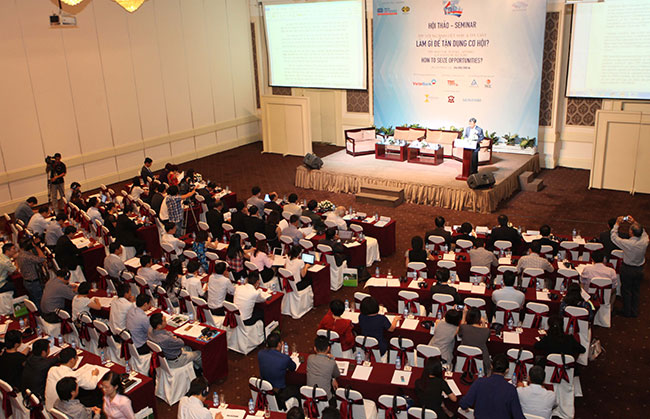
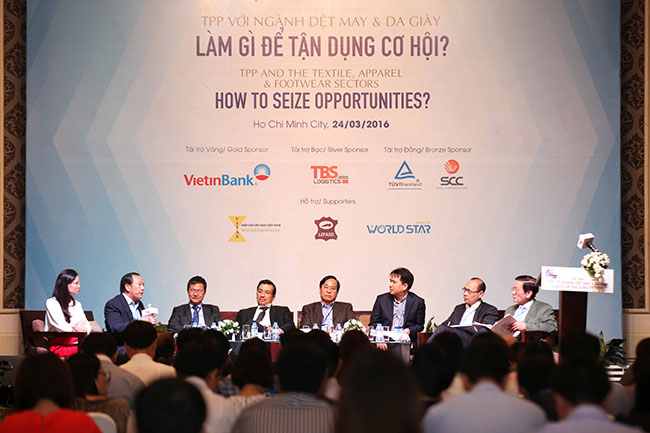
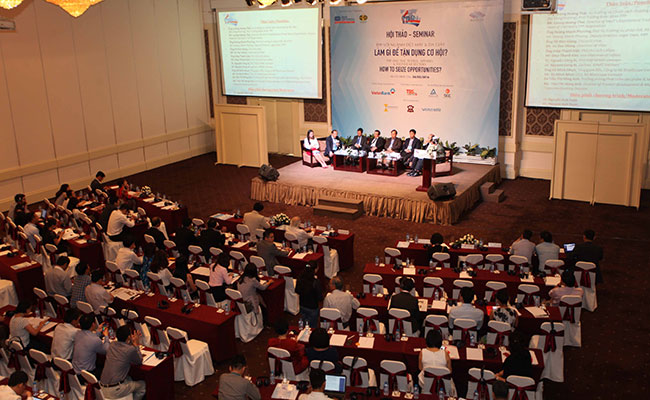
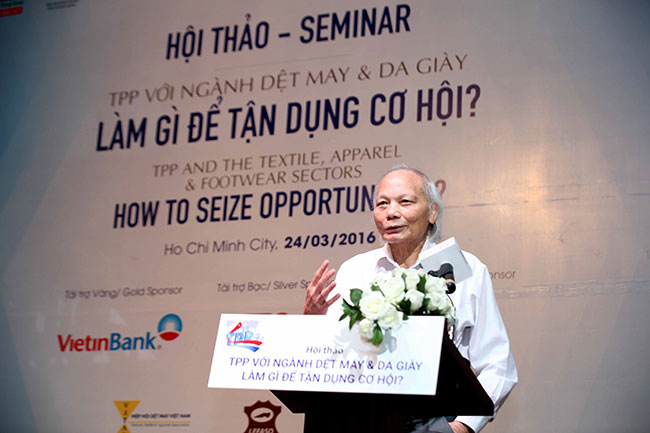
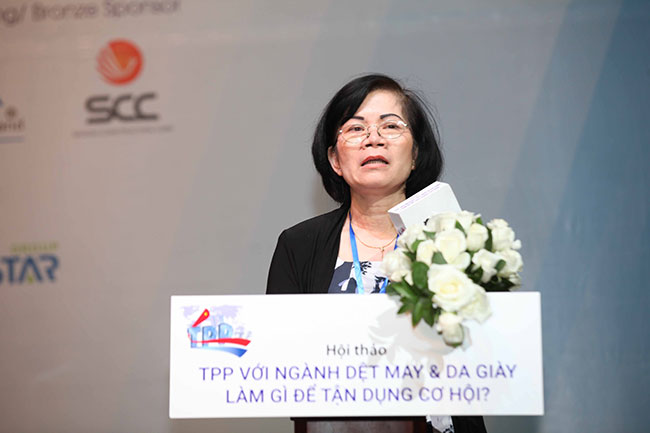
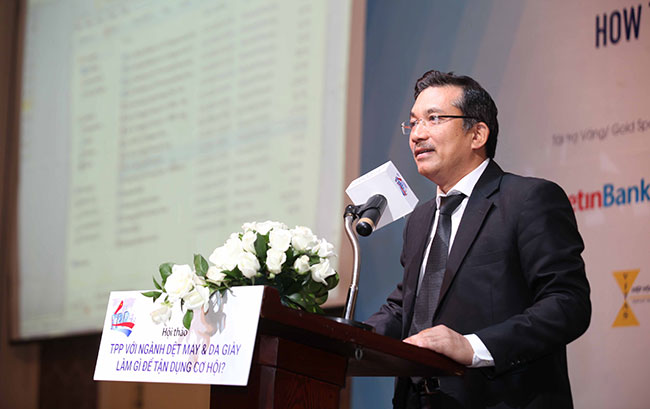
What the stars mean:
★ Poor ★ ★ Promising ★★★ Good ★★★★ Very good ★★★★★ Exceptional
Latest News
More News
- Trung Nguyen Legend breaks ground on Southeast Asia’s largest coffee factory in Buon Ma Thuot (March 11, 2025 | 14:51)
- Sandbox for crypto assets in Vietnam: if not now, when? (March 11, 2025 | 11:34)
- Ho Chi Minh City Metro Line 1 officially inaugurated (March 10, 2025 | 14:15)
- FDI inflows rise 35 per cent in first two months (March 07, 2025 | 16:21)
- Sustaining growth in a volatile global environment (March 06, 2025 | 14:00)
- PM holds dialogue with businesses from ASEAN (March 05, 2025 | 08:46)
- Shrinking demand mutes manufacturing growth (March 03, 2025 | 11:15)
- Vietnam welcomes European firms for shared successes: PM (March 03, 2025 | 10:17)
- Ministry of Finance merges with MPI and CMSC (February 28, 2025 | 19:36)
- Cutting red tape to bolster economic growth (February 27, 2025 | 16:58)















 Mobile Version
Mobile Version